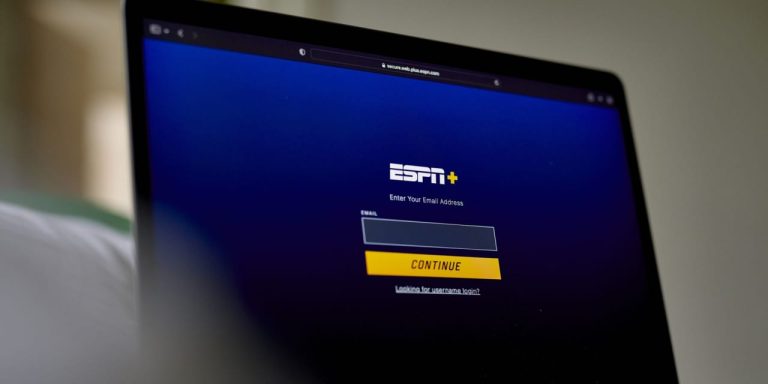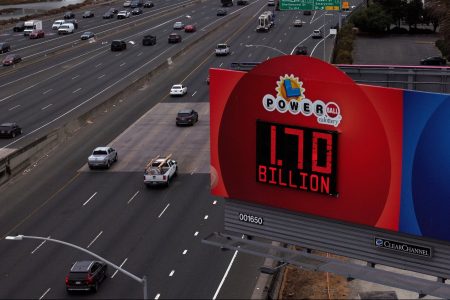Calling all armchair quarterbacks and fantasy financiers:
Walt Disney
could use some ideas for solving its ESPN problem. It’s a tricky situation, even with television wizard Bob Iger back on the case at Disney (ticker: DIS). The company, which reports full-year financial results on Nov. 8, is considering bringing in a new partner for ESPN. It recently began reporting financial details for the unit. Let’s run through some of the challenges.
The first thing to know is that sports are easily the best-performing part of traditional TV, and ESPN bills itself, justifiably, as “The Worldwide Leader in Sports.” Among the 50 most-watched broadcasts last year, 47 were National Football League games. Strip out the NFL, and 38 of the top 50 were other sports telecasts, according to BofA Securities. ESPN holds an unparalleled set of sports TV rights. Its operating income this fiscal year could total $2.8 billion—not the worst starting point for a crisis.
That means that ESPN could contribute between 20% and 25% of Disney’s total segment operating income for its fiscal year ended September, and nearly all of its media and entertainment income. Media income has been depressed by streaming costs, and is expected to bounce back as spending subsides and subscriptions ramp up. That’s the theory, at least. The reality for now is that Disney needs for ESPN to hang on.
But it isn’t, entirely. Operating income for ESPN could come in 3% lower despite a 2% rise in revenue. Macquarie Research notes that ESPN’s year-to-date operating margin is 11.2%, versus 15.7% for its last fiscal year and 16.9% the year before. ESPN’s financial success over the years allowed it to outbid others for sports rights, contributing to runaway price growth for rights, which is now biting back.
From here, revenue gains could be more difficult to achieve. Since 2010, ESPN has grown its advertising and affiliate fees, or what cable companies pay to include ESPN in their bundles, by an average of 6% a year, compounded, despite a 3% average yearly decline in subscribers, which has been accelerating. It did this through a combination of scarcity value and strong-arming cable companies. But ESPN now brings in close to $9.50 per cable subscription, making it the most expensive channel in the bundle by far. Add in ESPN2, ESPNU, and all the other related channels, and the cost is closer to $13.
In September, when
Charter Communications
(CHTR) argued, convincingly, that it would sooner quit TV than give into Disney’s latest ESPN demands, Disney was forced to make big concessions, including partnering with the cable company on streaming distribution. That could mark the end of Disney’s ability to raise prices while TV outside of sports collapses. This season, non-sports entertainment ratings among 18- to 49-year-olds are down 23%.
The answer would seem clear: Cultivate ESPN+ as a replacement for traditional ESPN on TV. But that’s no slam dunk. Remember when CNN’s parent company shut down the CNN+ streaming service just weeks after it launched? It’s because a) the service was for CNN superfans, but b) it didn’t include live CNN, and c) CNN superfans would presumably always rather watch live CNN than the thing that costs extra but isn’t live CNN, so d) the target audience for the thing didn’t truly exist. That’s an oversimplification, and ESPN+ is no CNN+, not least because it has close to 26 million subscribers. But it’s important to note that it doesn’t, for now, include live ESPN.
One of the miracles of the cable-TV business model is that viewers who don’t care for sports have long subsidized those who do, but in streaming, people mostly pay for only what they want. To replace ESPN’s current economics entirely with streaming, BofA analyst Jessica Reif Ehrlich estimates the service would have to cost $41 a month.
That figure could easily be too low. It’s based on the 63 million people who watch ESPN over traditional TV, plus those 26 million streaming subscribers. But many of those subscribers currently get ESPN+ as a cheap add-on to Disney+ and Hulu in the company’s bundled offering. How many would stick around for a $41 stand-alone ESPN? The fewer who would, the more it would have to cost. If it’s 10 million, for example, the cost would have to top $100 a month.
Hence, the new partner. Hearst owns 20% of ESPN. Disney can sell up to 36% and maintain control, with Hearst diluted down to 13%. A deal with a sports league would make obvious sense. Disney would get help with the soaring cost of TV rights. The league might get a cut of subscriptions and advertising, offset by reduced rights income. Part of the pitch would have to be that the old way of doing business is at risk of collapse, so better to sign up for the new way.
Apple
(AAPL) and
Amazon.com
(AMZN) have plenty of cash and an interest in streaming. A cable giant like
Comcast
(CMCSA) is another possibility. This past week, Disney said it would buy the one-third of Hulu that it doesn’t own from Comcast, as expected, with a price floor of $8.6 billion, which could rise following an appraisal process.
Whoever the new ESPN partner is, it is likely to see the pinch that Disney is in, and a deal could be priced accordingly. Sooner would surely be better for Disney.
Disney stock has been on a wild ride, from $145 or so before the pandemic, to $85 when the theme parks were shut down, up to $200 a year later as investors looked to streaming as a pandemic winner, and now down to $81. That’s a level not seen since spring 2014, several months after the first Frozen hit theaters. It puts Disney’s market value at $148 billion. Free cash flow is pegged at $4.4 billion in the company’s latest fiscal year, rising to, well, anyone’s guess in two years. Some 14 analysts have ventured estimates. The low call is just under $5 billion. The high is over $10 billion. Which is closer to correct will depend greatly on whether Iger can find a way to extend ESPN’s success.
Write to Jack Hough at [email protected]. Follow him on Twitter and subscribe to his Barron’s Streetwise podcast.
Read the full article here









